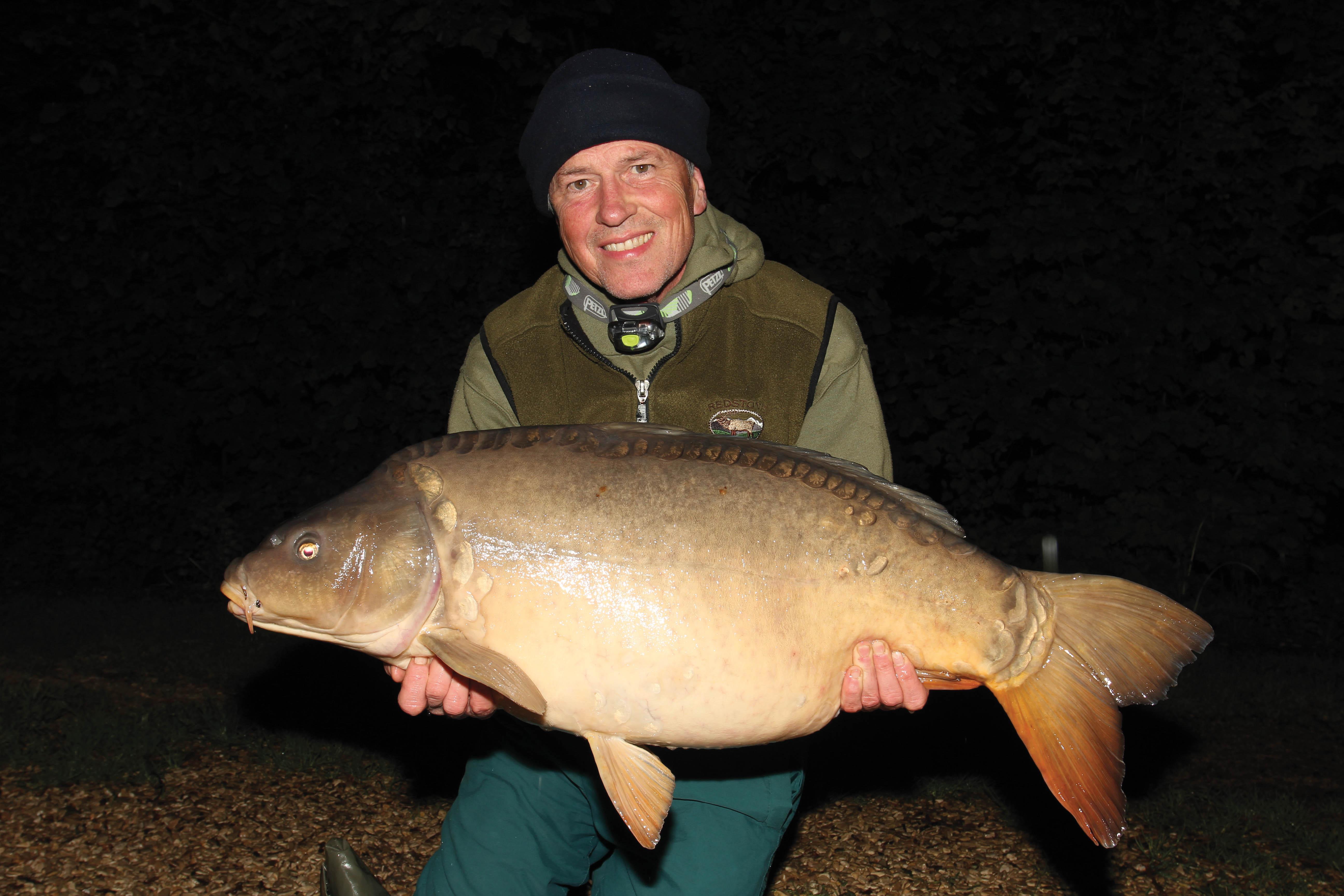Hookbaits: Taking Back Control
Are you a dedicated follower of fashion when it comes to bait? John explains how using your own unique hookbaits can give you a huge edge.
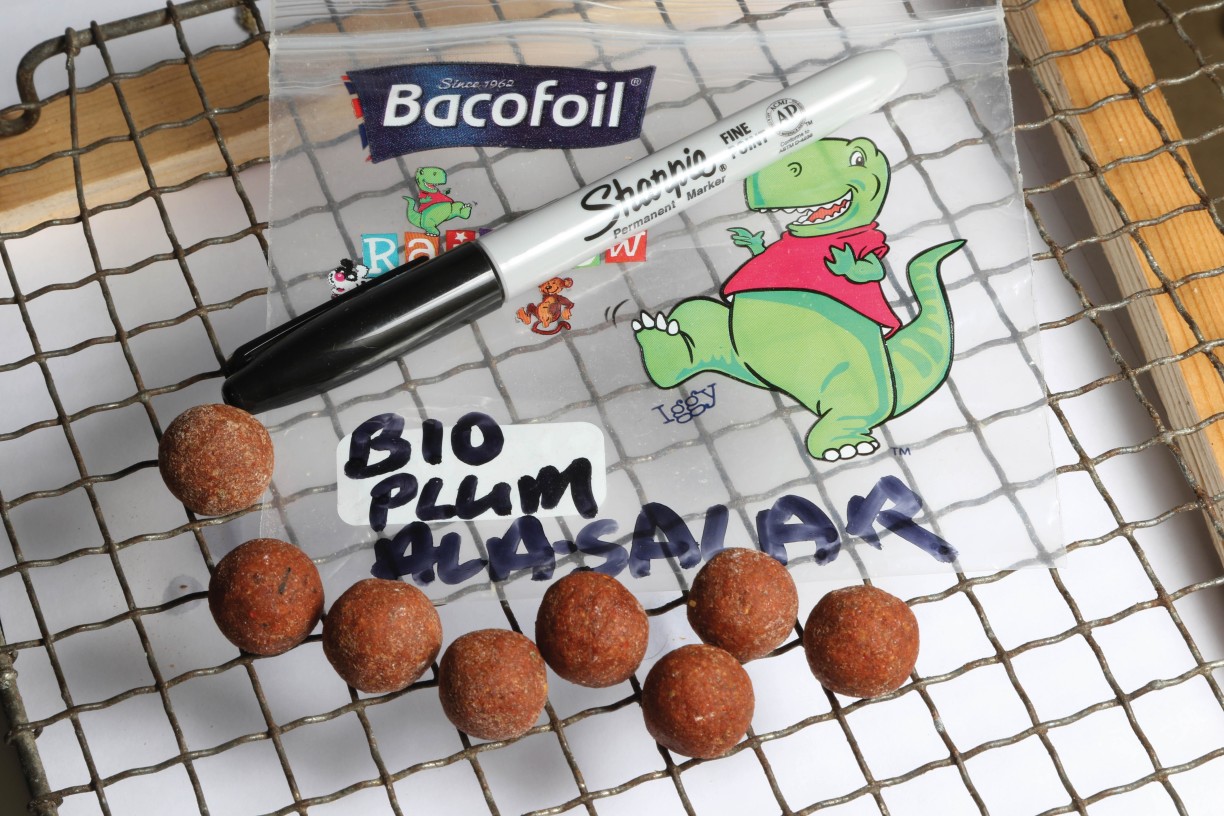
The recent increased pressure on lakes and pits suggests that a few of us might consider changing our approach and perhaps use much less bait than normal.
This is a common tactic on pressured venues and is effective during short winter sessions when feeding spells can be as short as 20 to 30 minutes in any 24hr period. On many fisheries, carp often have too much bait to choose from. Fashion dictates use of the well-practised tactic of fishing over beds of bait, be that particles or boilies. The familiar habit of camping out and waiting for a bite is still ingrained in our psyche. Irrespective of water temperature, I believe a well-designed nutritional boilie will be snapped up by a hungry carp and will often produce a faster result. I would like to discuss how we might improve our chances of a pick-up by changing the management of our hookbait preparation.
In pursuit of the perfect hookbait, we should consider moving away from the fashionable ultra-high-attract, over-flavoured, chemically preserved, dayglo-type hookbaits made with inedible ingredients such as microspheres and silicone. Instead, we might want to consider using a hookbait that contains ingredients with a high nutritional value. Hookbaits made in this way could still be classified as ‘high attract’, but in a more natural and nutritional way. We can only achieve this level of perfection if our bait is made from a balanced and nutritious base mix.
Although I am a bit reluctant to say so, I am afraid the generic, off-the-shelf, pop-up mix just will not do. The better our bait is, the more likely all fish will take it deeper inside their mouth to taste and evaluate it. Fish instinctively know that their body requires nutritious food, and this is what we should be providing them with. Even in cold water when a carp’s metabolism has slowed down, conditions will not stop it from digesting bait; it will just take a little longer for food to pass through its system. Carp benefit from eating good bait regularly, but if they do not eat enough nutritious food in the winter months, their bodies will stop metabolising and they will revert to a state of torpidity — in the old days, this was called hibernation. I have no problem with the basic concept of using a high-attract hookbait, and I agree that the use of a minimal number of freebies is fine, providing the bait is made from HNV ingredients.
Effective though they may be, we should perhaps skip the same old tactical routines we go through on the bank and be prepared to make at least three or four key changes in our normal approach. The more changes we are prepared to make, the more likely we are to get a result. We are unlikely to improve if we do not change our habits. The changes we opt for will vary from angler to angler, and venue to venue, but in essence, we need to be versatile and flexible. This will help us set the scene for how we really want to fish. We should consider being innovative, and perhaps use this new year to reassess how we approach our hobby. This may sound complicated, but it need not be. It is important that we do not measure our success against anglers who spend more time by the waterside than we do. It is also imperative that we measure a proportion of our own success by our level of enjoyment and not just our results. We might be well advised to compare our own success against those anglers who have the same time constraints as we have. In this way, we will feel better within ourselves and hopefully a little more positive about our fishing. The study and development of sports psychology is a proven science. The nurturing and understanding of a positive approach could be a proven route for our wellbeing and contentment. When it comes to carp fishing, I wonder how many of us have considered how important our state of mind is?
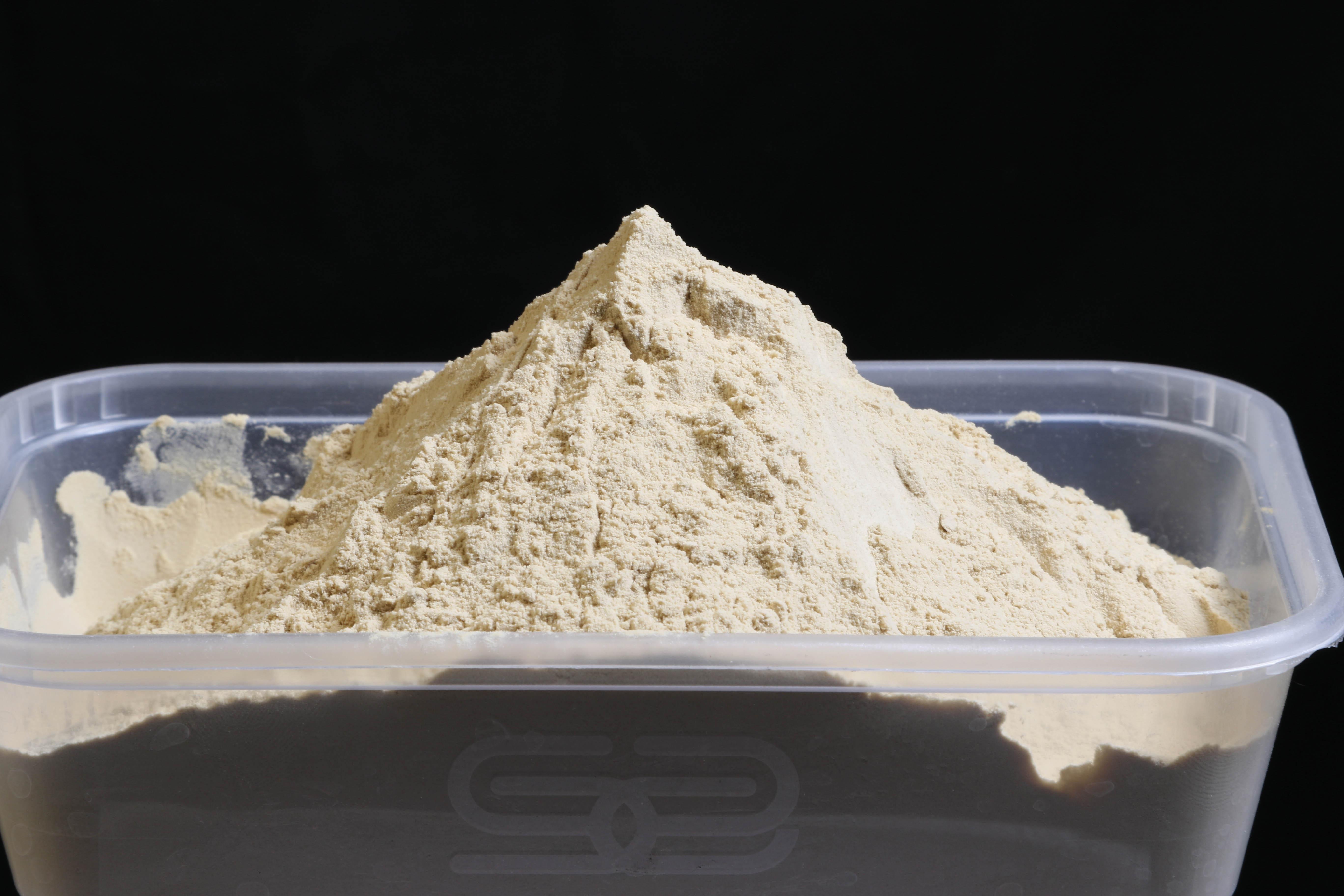
Your idea or someone else's?
We know bait is a major part of successful carping, and we also know that certain baits are used because they have become the latest fashion or trend. Are we following a particular style of angling that is someone else’s idea rather than our own? Maybe we should consider questioning whether everything we hear is true? Are we being cleverly manipulated for commercial promotion? There could be some other bait or tactic that is more effective and/or better suited to our own style of fishing. Whilst it might be hard to accept these observations, they are valid questions that we should seriously consider. We are more likely to learn if we take steps to find our own way of doing things, and when this leads to success, we will know that our own bait and tactics can be totally relied upon.
My message for 2021 is that we should perhaps take stock, relax a bit, and allow our own fishing to become more intuitive and more instinctive. Let’s be a bit more observant of other anglers as well as taking in our surroundings. I am sure none of us really want to be driven by some strange subliminally influenced robotic procedure that inexorably takes hold of us and controls our angling behaviour.
For those willing to embrace this philosophy, I recommend that we might start the process by changing the way we prepare for a session. I also suggest that we do this well in advance of each planned trip. However busy we are in our personal life, it should always be possible to find a little extra time for those additional key preparations that might make the difference when we are on the bank. I would, therefore, like to discuss a fresh approach to bait preparation and tactics, and this includes the ability to master the art of making our own perfect hookbaits.
People who know me well, will also know that I rarely hold back with my opinions. Let us start off, then, with a typical John Baker comment and set the scene for what is to follow. I do not think our terminal rig, in any form, is more important than our bait. I say this, because I believe the more attracted a fish is to our bait, the more likely it is to take it further inside its mouth to evaluate it. With this in mind, I do not hold the view that over-flavoured or high-attract hookbaits will outperform any bait with real food value. This is a huge subject, but it can be simplified for those with an open mind who might accept the theory. To lay out a clear picture of what I mean, we must assume that the tactics in question involve the use of boilies only, which is my preferred personal approach. Please understand that I do not discount the benefits of using other baits and tactics; I just like using boilies because I think they are more likely to be selective in catching the bigger fish I seek.
After 50 years of their use, it is fair to say that carp know exactly what boilies are. It is also reasonable to assume that boilies probably form at least 50 to 60 per cent of a carp’s diet. This should be ample reason to provide fish with a bait they like, and a bait they want to eat. My hookbaits are always made from the same base mix ingredients as my freebies. I incorporate the same profile of nutrition and attraction that often negates the excessive use of flavour or additive.
First and foremost, carp should be attracted to the base mix recipe in its own right. This statement might sound a little strange, especially from a person like me who has spent a lifetime researching and developing liquid flavourings for use in carp bait, but I hark back to the principles and benefits of edible bait, as opposed to the kind of ‘traps’ or ‘lures’ often used today, and all presented on a self-hooking, anti-eject-type rig. I believe that if we use a base mix recipe that is in harmony with the flavour and attractor ‘label’, then carp will respond positively and a better hook hold will result. We can also achieve this without using evermore complicated terminal rigs.
I mentioned earlier that this is a huge subject, and many readers will cite examples of angling success that might counter my views. I will not question these opinions, but I do know for a fact that the country’s most successful anglers today, use relatively simple rigs and tactics, and make sure that their hookbait offering is the best it can be.
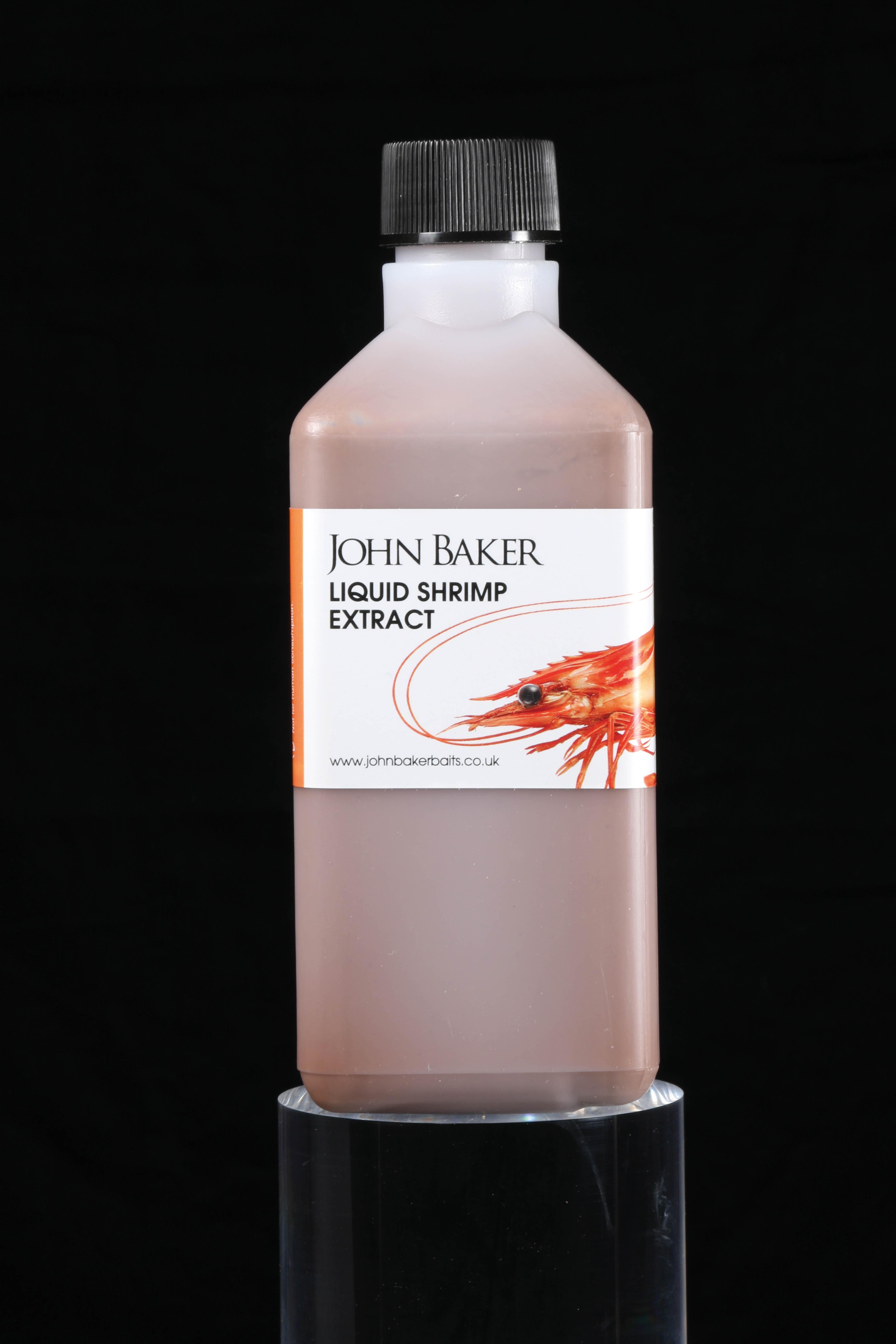
Hookbait heaven!
To get the best from a hookbait, I believe it should be freshly made and used as soon as possible. If we are truly seeking the results we say we desire, then the tactic of air-drying boilies for weeks on end, or the use any type of preserved boilie, are not the route to success. Top-performing hookbaits are unlikely to be found pre-made and preserved in pots. We know the ones… the type that often get stored for months, or even years on end in our tackle bags. We might bring them out from time to time, and then they are dipped, coated, glooped, glugged or rehydrated with various liquids as a means of revitalising their attraction. This is a tactic that might be effective occasionally, but it is not as effective as the alternative. Whenever possible, I would advise making a little batch of freebies and hookbaits from a fresh HNV base mix a few days prior to a session, and keeping it in a fridge — most bait made this way will stay fresh for up to a week in the cooler weather. Most people should have plenty of time during the week to make those essential preparations before their next trip.
When making hookbaits using just one large egg, with a minimum of practise, it is possible to make over 50 perfect hookbaits in under an hour. This is done by incorporating either corkballs or cork dust, and with a carefully chosen, fresh base mix. I repeat: this requires under an hour’s preparation time, and no special equipment is needed… we all have time to do this!
I know that most accommodating and reputable bait suppliers will be happy to supply the same base mix powder and flavour package that they have used to create the bulk boilies they supply. We should all have the option of making our own fresh hookbaits, and by doing so we will have plenty of scope to change the size, shape and texture of them. We can also reduce or increase the flavour level, blend additives together, and generally do our own thing. I am a great advocate of using blends of different flavours, all within the same boilie recipe, and this is something that requires careful thought. By using a blend of flavour in a bait recipe, it can add unique attraction and unprecedented complexity. This is a great advantage. It is impossible for other anglers to copy, and is hugely effective. Some flavours mimic the chemicals given off by the natural food in the water, and stimulate feeding reactions. The ability of carp to detect our bait and then be stimulated to eat it, is a truly fascinating subject.
My interest in blending several flavours together in bait all started in the early 1980s. Around that time, I became very serious about experimenting with some of the individual aroma compounds that are used in a flavour recipe. Having already tested many flavours and additives on captive carp in the false environment of aquariums, I went on to test bait recipes and new flavour combinations whilst I was fishing. In the early days I had some of the best results using single-aroma compounds such as isoeugenol, vanillin and amyl acetate. I would often dilute and blend these products in other mild confectionery-type flavour blends. The first of these blends was a flavour I called Butt Ringer, one which I still make today. I also found a rather rare type of natural maple extract, which I obtained, after a great deal of effort, from a maple syrup manufacturer in Canada. This was later developed into the Maple flavour which I also still make, using exactly the same recipe. Some of these early flavours came from a wonderful old-fashioned company called Perlarom, who were based in Croydon. Interestingly, the company — sadly no longer in business — also helped me develop a flavour called Scopex, for Rod Hutchinson. I promised Rod that I would never sell the recipe commercially during his lifetime, and although it has been copied by many different bait companies throughout Europe, I can guarantee that none are the same as my original version. My conscience is clear, and I now make my own version. Out of respect for Rod, however, I sell it under the brand name Toppex. A much stronger type of flavour than this, and one which incorporates a higher level of six additional aroma components, is my Milky1. This has proved to be exceptional when combined at low dose levels with a wide range of base mix recipes.
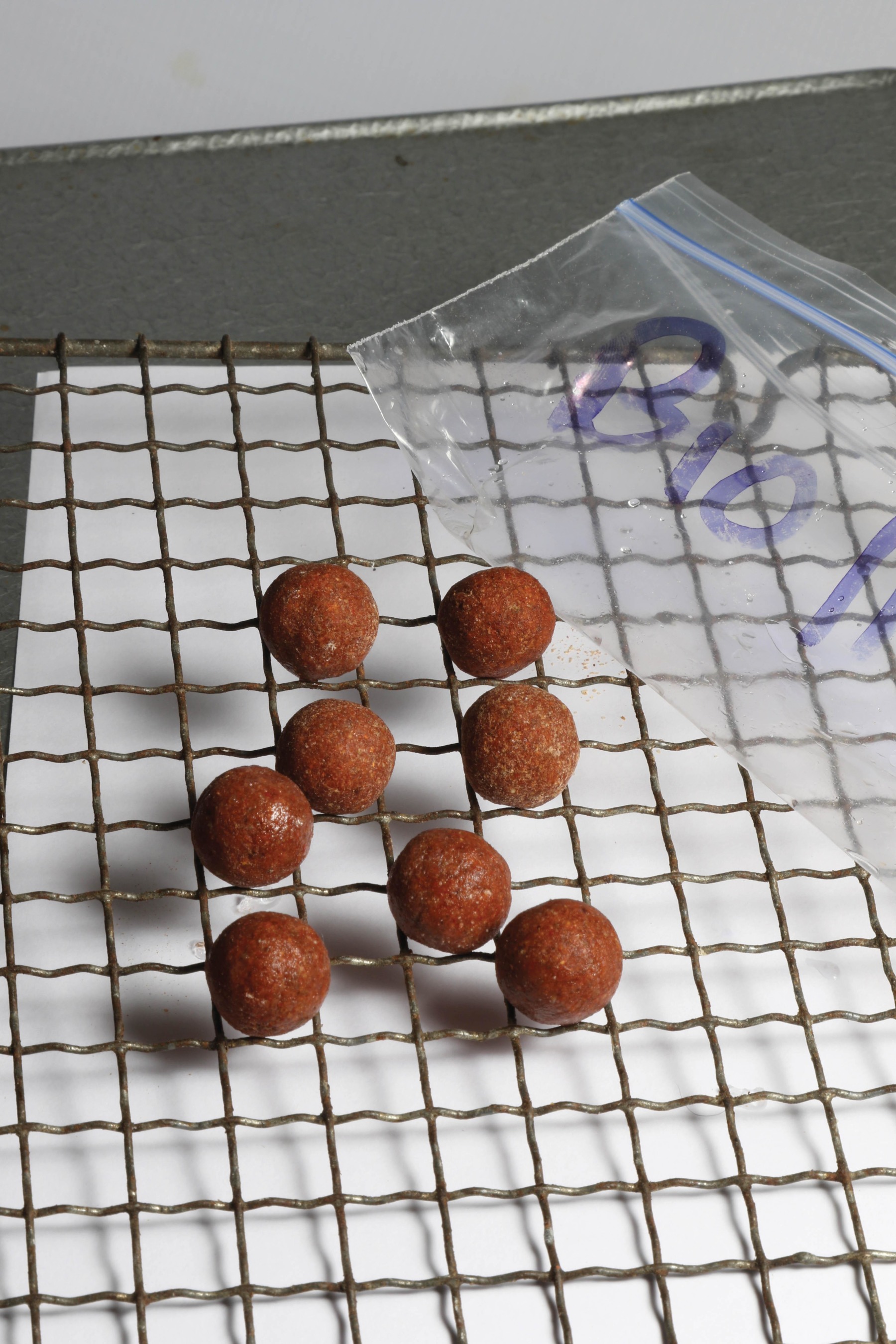
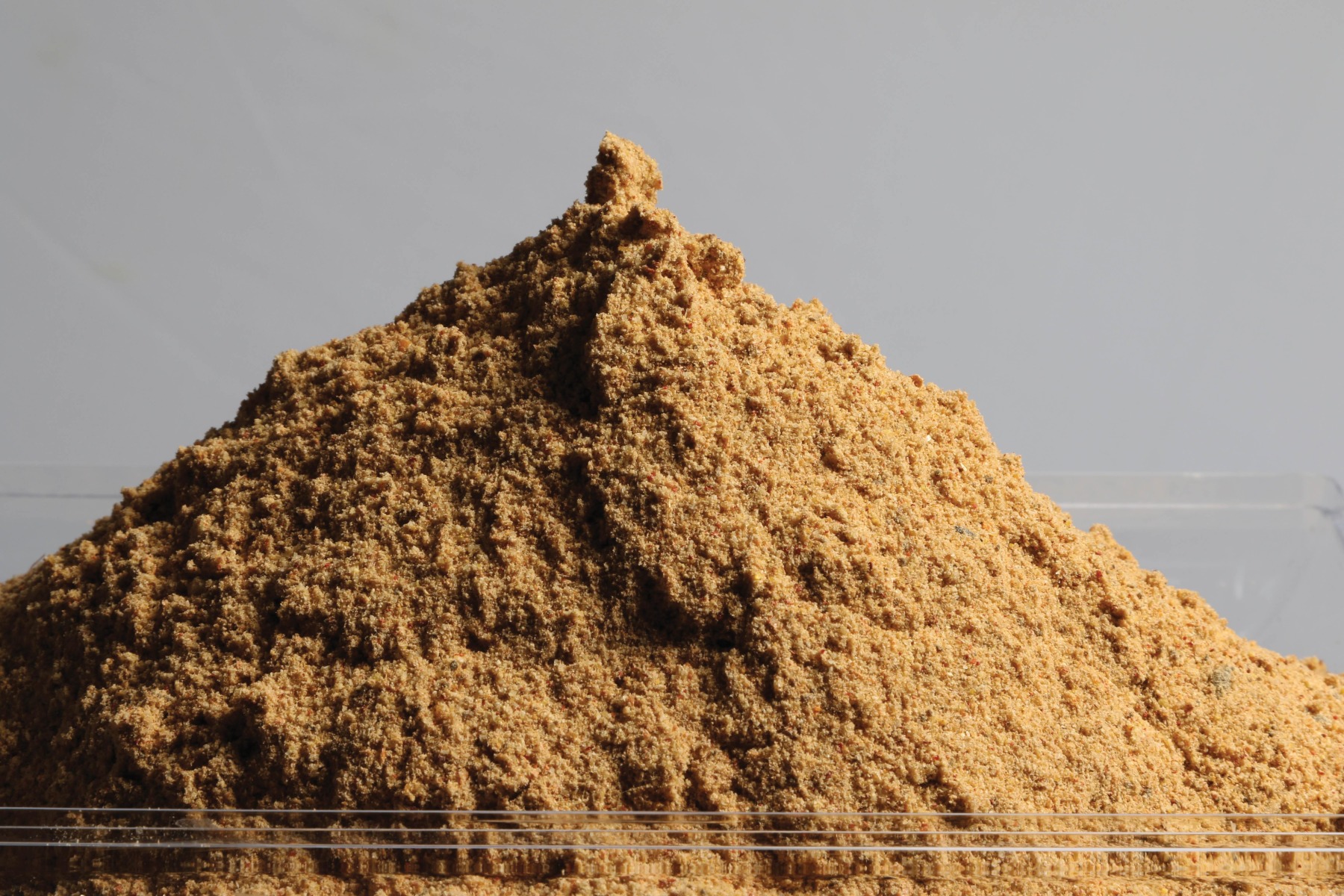
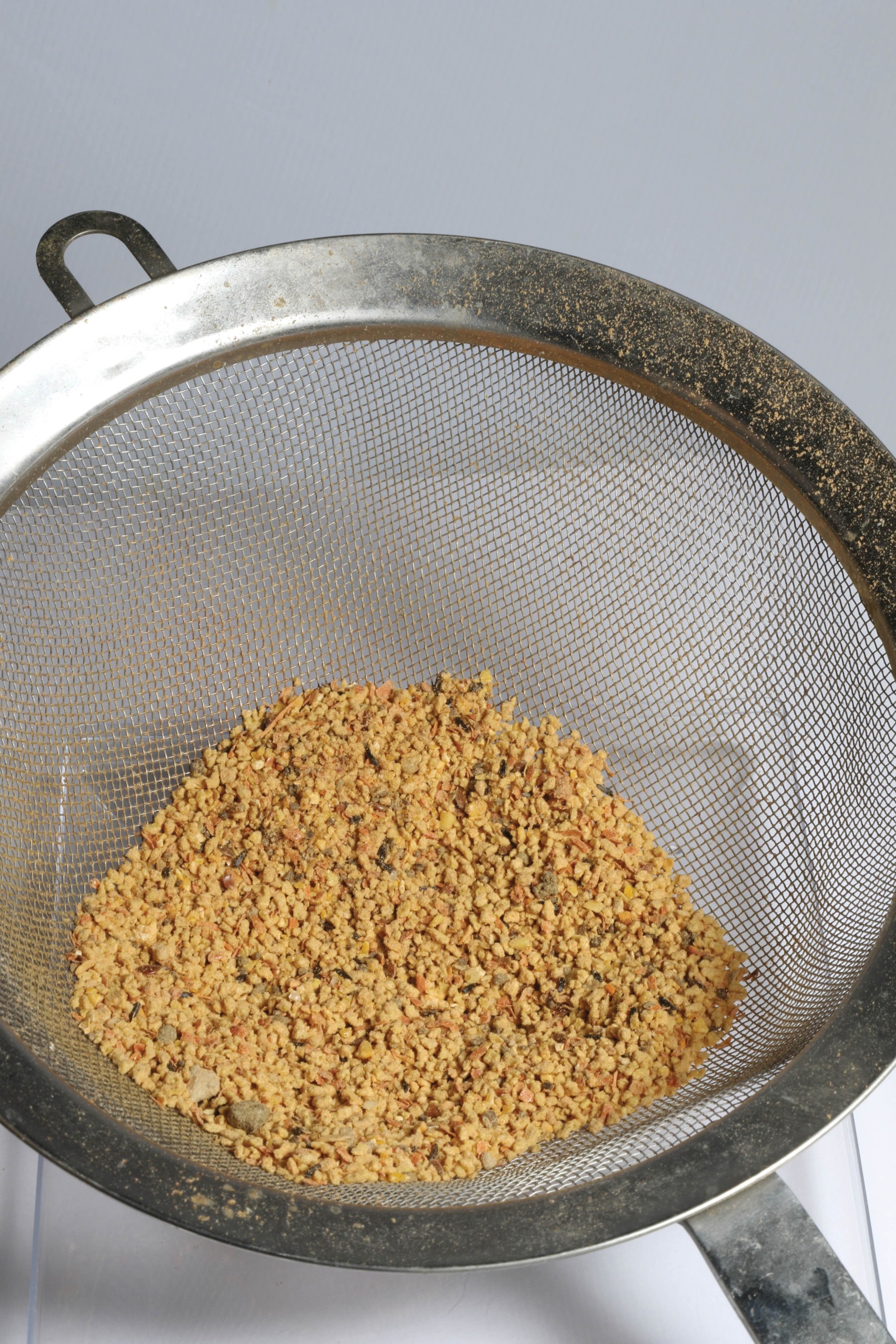
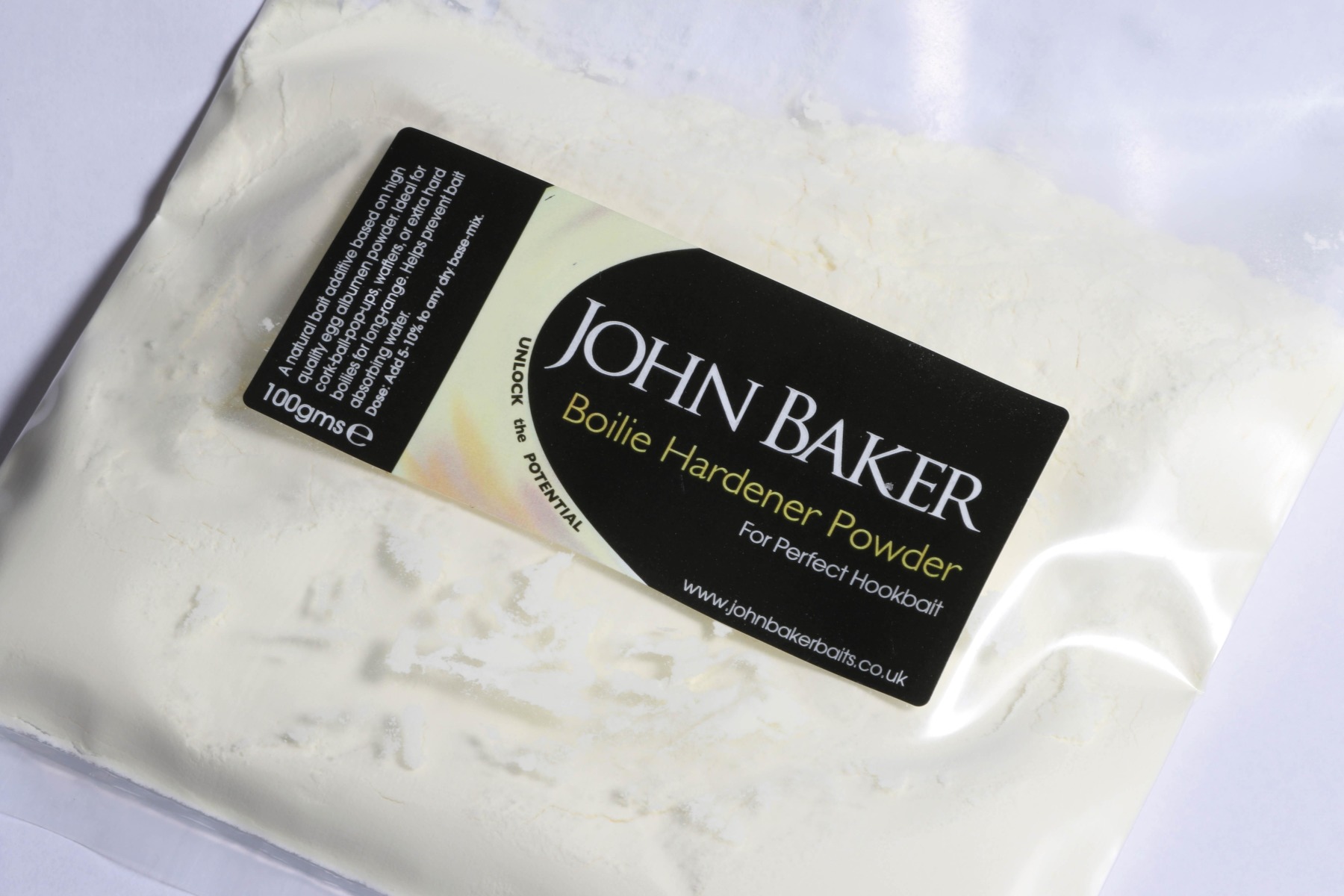
My original motivation in going to all this trouble with mixing and developing flavour blends, was to help ensure that no one else would be using the same flavour combinations as I was, and I still feel the same way. I mentioned in a previous article that one of the great joys in life is sharing experience and knowledge… I guess that I have made most of the mistakes with bait, so you do not have to! I occasionally think it has all got a bit out of hand, and that it has, perhaps, become a personal obsession. For example, to protect the Intellectual Property Rights of several of my flavours, some of which contain up to 40 different aroma ingredients, I have purchased their world recipe rights. I am, then, either quite mad, or qualify as being one of the true English eccentrics… I think I prefer the latter, which sounds much more fun!
Anyway, when it comes to flavours, the rest is history, as they say. I am rather proud of the fact that classic blends such as my Ala Salar and Plum, or TM1, Milky1, Chicken Tikka, Butt Ringer, Peach, and Frost & Flood, have become the go-to flavour options for serious bait devotees. The important thing to remember is that most of these flavours are very strong, and an accurate syringe, graded in tenths, must be used when measuring out parts of one millilitre. Recommended dose rates for dedicated hookbait mixes should indeed be slightly higher than the doses used for freebies. As a rule of thumb, it pays to use a little less flavour than the suppliers may initially recommend. It will not take long to field-test a few different flavour combinations — wherever they are sourced from. Our results, by way of fish on the bank, will soon prove which flavour combinations meet our expectations.
To conclude, it is vital that the smell of the finished bait does not overpower the taste and profile of the main base mix recipe. If you can smell only the flavour and cannot make out the important subtle nuances of the principal base mix ingredients, then I suggest that your bait might be too strong!
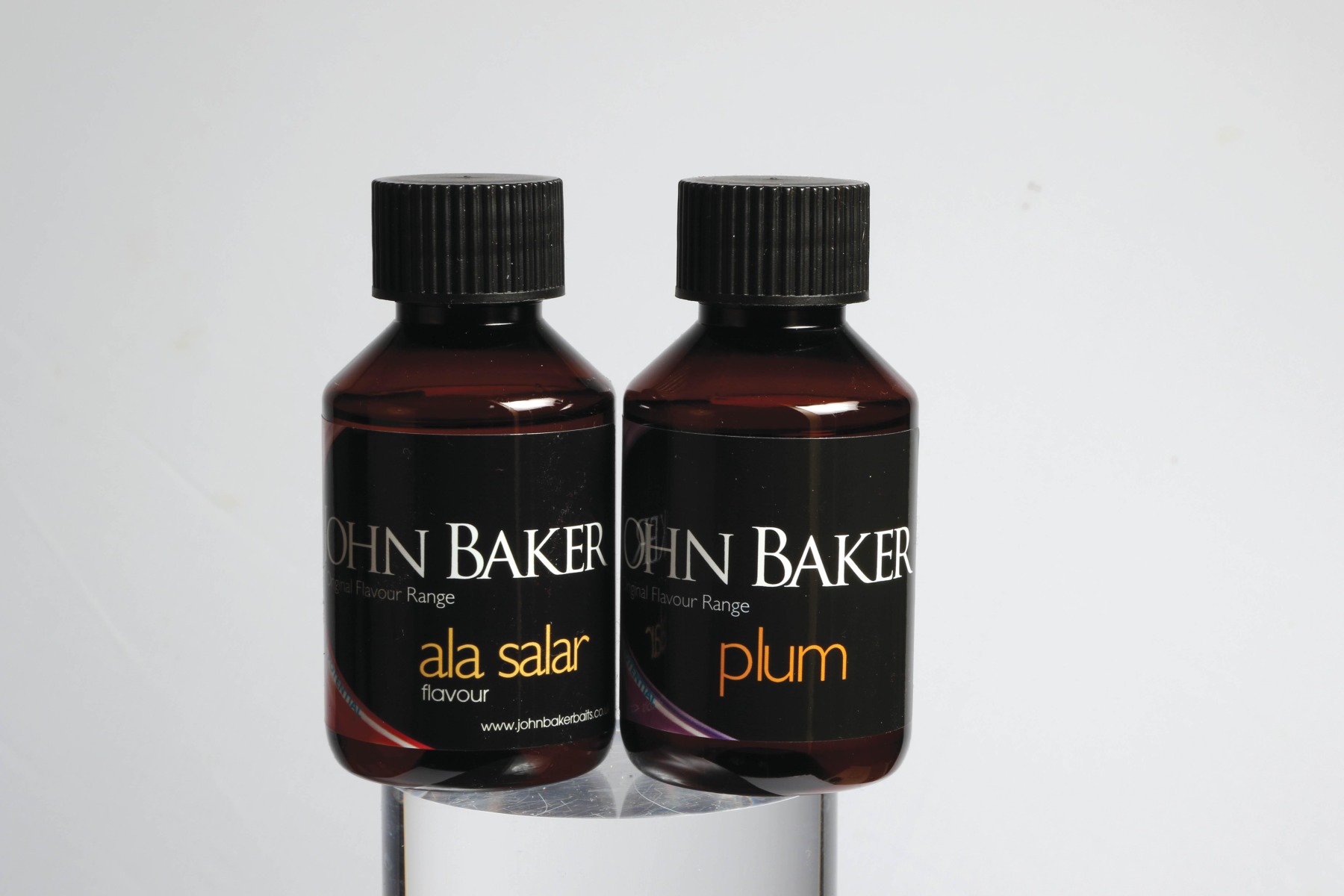
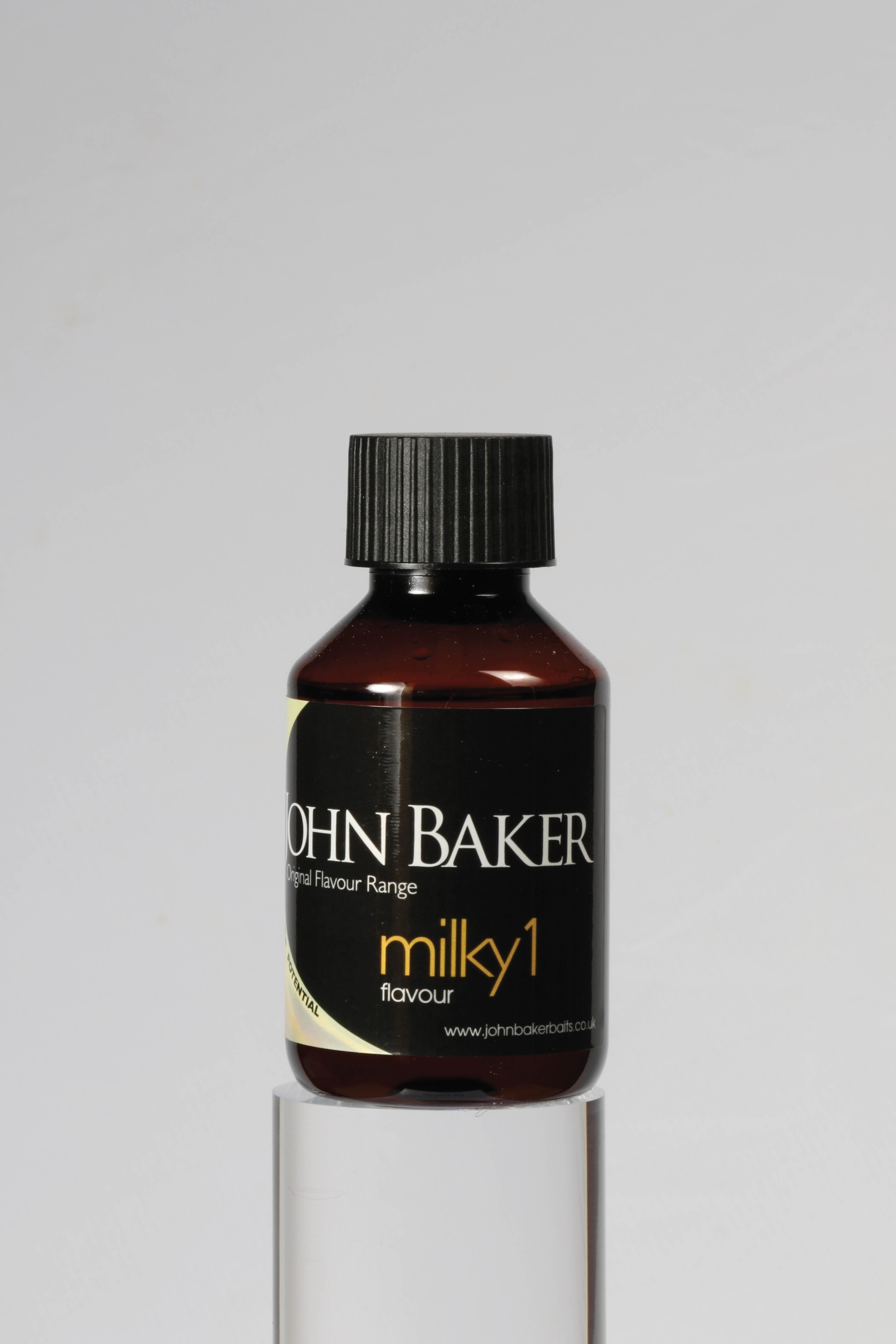
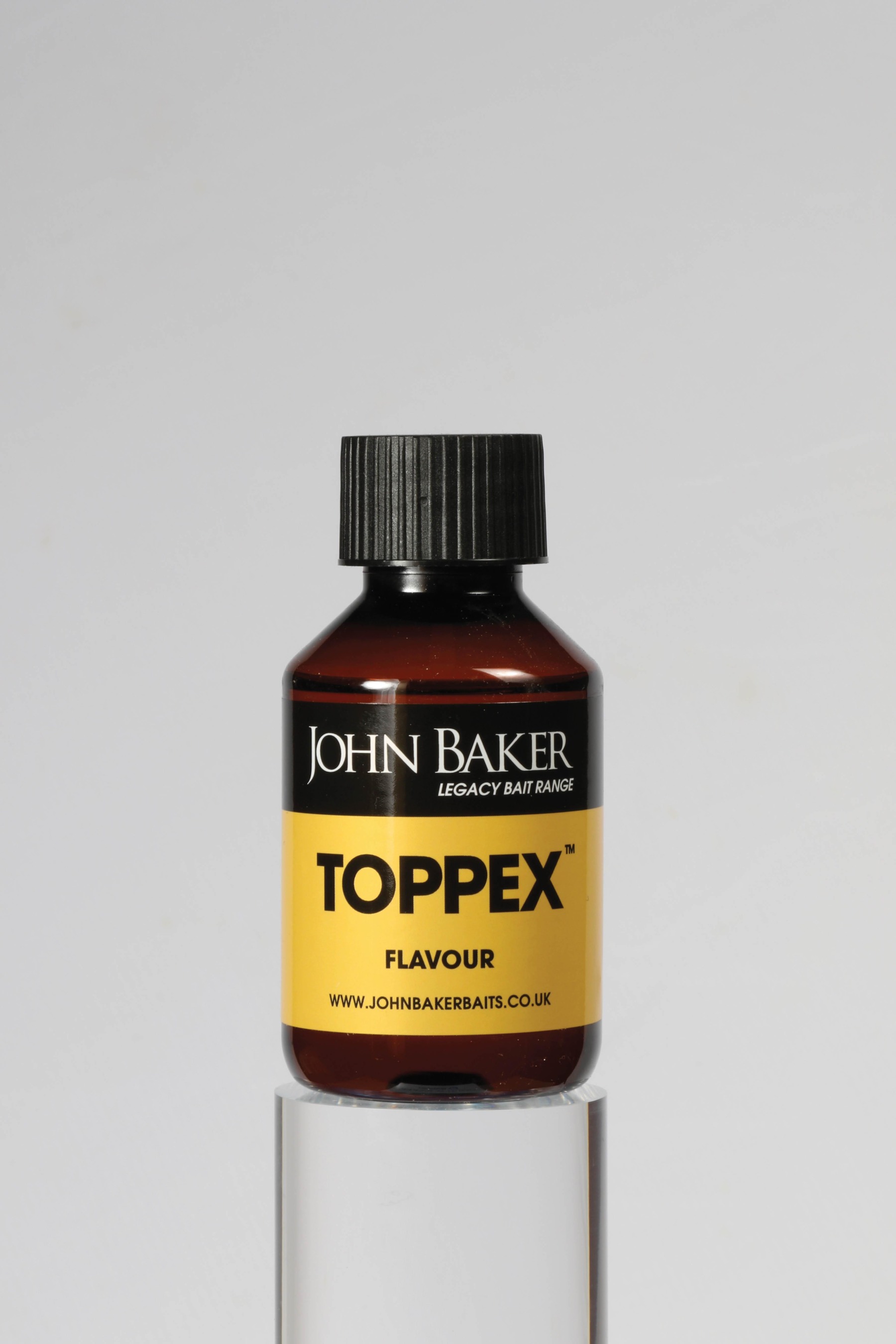
The perfect recipe
When I first tested the Bio-Shellfish base mix with the Ala Salar and Plum combination, I initially used too much Plum. This completely overpowered the lovely pink-tinged salmon-type aroma of Ala Salar. The blend I now find best for long-term use in free offerings is 0.75ml to 1ml Plum and 3ml of Ala Salar to six large eggs. When making boilies and pop-ups as hookbaits only, I use as little as 0.2ml Plum and 1ml Ala Salar to one large egg, and this is the absolute maximum dose rate I would recommend. I like to make my hookbaits only slightly stronger than my freebies. Space dictates that, within this article, I limit the recipe recommendations I might normally suggest.
As readers may guess, the recipe variations are many and varied, if not infinite. I might also point out that the fishes’ reaction to bait in numerous different fisheries, will also vary. Carp that live in one venue may prefer a more subtle style of bait than fish that reside elsewhere.
As a start, we should first choose our base mix, and then create a flavour and additive package which is in harmony with it. The base mix may not need to be altered for a couple of years, but the flavour package can be tweaked or altered at any time to suit conditions. Flavour blends may also need to be changed, to be in tune with the frequency and time we might spend at any specific venue. The longer we spend on one fishery, the lower the flavour and attractor package should be. For excursions abroad or short one-off trips, we should be able to get away with a slightly higher level of flavour in our hookbait recipe. I would strongly recommend using a very low level of flavour for our freebie recipes.
This concludes my overview of the pursuit of bait excellence, and the fresh approach of taking back control of our hookbait design.
10 TIPS FOR MAKING PERFECT HOOKBAITS
John Baker reveals his best 10 for when it comes to making your special hookbaits
1. Add 5 to 10 per cent Hookbait Hardener Powder or egg albumin to harden off hookbaits.
2. Sieve the bits from the base mix to make a more smooth-textured bait.
3. Measure flavours and base mix powders accurately.
4. Use bait when it’s as fresh as possible, or freeze it for later.
5. Ensure the water is boiling vigorously or the bait will stew without sealing!
6. Approximate boiling times for boilies: 10 to 12mm, 30 secs; 14 to 16mm, 45 secs; 16 to 18mm, 1min; 18 to 20mm, 75 secs.
7. Air-dry hard boilies, wafters and pop-ups for 12hrs before use or freezing.
8. Make up and store fresh or pre-frozen session bags with 8 to 10 hookbaits and some soft paste.
9. Avoid using too many ingredients and additives just because you can — less is often best!
10. To keep paste pliable, add a touch of pure soya oil in winter and salmon oil in summer.
Paste and paste wraps
The use of paste, in all its forms, is a great tactic to use with a dedicated hookbait presentation. Paste can also be used quickly and easily at any time of the year, and can even be made up on the bankside during a session. A slowly dissolving paste adds a huge amount of extra attraction to bait and usually helps induce a bite in tough conditions. What must be remembered is that paste will impart 100 per cent of its attraction and nutrition through the water column, because it is not denatured or sealed in by boiling or cooking. When paste is used in rivers, it really comes into its own, as the current does much of the attraction work, drawing fish upstream to the area as they follow the scent trail of nutritious food signals.
Ultimate hookbait control should include the use of fresh, unpreserved paste. Fresh paste made at home, is an absolute winner! The strength and leakage of paste is fully controllable, and this is something that is extremely difficult to replicate when using dips, gel, glug, or any other type of bait soak.
Paste is quick and easy to make and requires the use of just one or two fresh eggs. The accurate measurement of flavour is vitally important, mainly because the bait is not being cooked. As a result, it’s not being partially sealed by the boiling process. I would recommend that only 30 to 50 per cent of the entire flavour and additive package should be used in a paste recipe. In real terms, and if we use the earlier recipe example of the Bio-Shellfish Mix with Plum and Ala Salar, the dose rate for paste for just one large egg, would need to be very low, at around 0.2ml of Plum and 0.4ml of Ala Salar.
There will be plenty of readers who already make up their own base mix recipes, and I am sure they will be well practised in many of these preparation procedures. I hope the explanation of my rather precise way of doing things will prove helpful to others. Anyone who has been following my recent YouTube and Instagram clips will also have seen how quick and easy it is to make your own hookbait. Not only is the whole process very rewarding, but the confidence we should all get from doing so will open up a vista of exciting possibilities.
